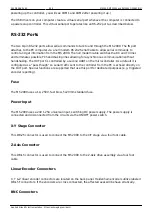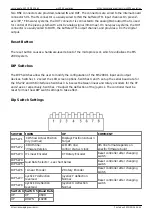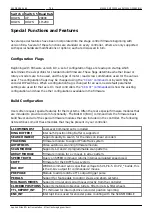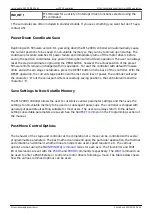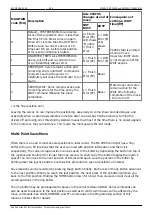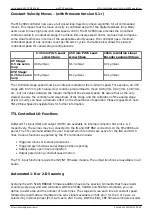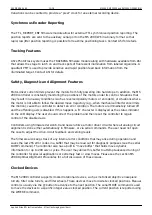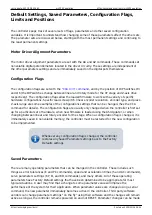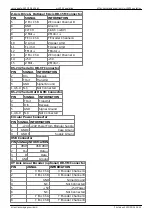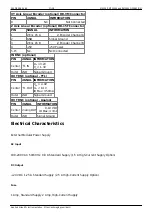
2022/03/16 04:45
11/18
MS2000, MFC2000 and RM2000 OPERATION
Applied Scientific Instrumentation - https://asiimaging.com/docs/
transitions can be counted to provide a “pixel” clock for an external recording device.
Synchronous Encoder Reporting
The
TTL_REPORT_INT
firmware module allow for external TTL synchronized position reporting. The
position reports are sent to the auxiliary serial port on the MS 2000 WK in a binary format so that
rapid, low jitter position reporting is possible for real-time positioning tasks. Contact ASI for details.
Tracking Features
ASI’s PhotoTrack system uses the
TRACKING
firmware module along with hardware available from ASI
that allows the stage to latch on and track spots of fluorescent illumination from labeled organisms. A
quadrant PMT is used to provide sensitive and rapid position feed back information from the
illuminated target. Contact ASI for details.
Safety, Diagnostic and Alignment Features
Motor-driver current-limits prevent the motors from fully powering into hard stops. In addition, the MS
2000 controller is constantly monitoring the positions of the motors under its control. Situations that
may result in run-away conditions (such as reversed polarity motors or encoders), or situations where
the motor is not able to follow the desired move trajectory (e.g., when mechanical interference limits
the motion), cause the controller to detect an error condition. The motors are immediately turned off
and the offending axis is disabled. If this happens, a ‘D’ character is displayed as the status indicator
on the LCD display. The user should correct the problem and then reset the controller to regain
control of the disabled axis.
Controllers using firmware Version 6.0 and newer utilize a motor driver circuit where all analog circuit
alignment is done either automatically in firmware, or via serial commands. The user need not open
the case to adjust the drive-circuit feedback and zeroing levels.
The firmware also keeps track of any internal error conditions that may arise during operation and
saves the last 255 error codes in a buffer that may be read out for diagnostic purposes (see the serial
DUMP command). The controller also has a built in “move buffer” that holds move dynamic
information for up to 200 servo cycles. The user may utilize this buffer to attempt advanced tuning of
the controller for special applications or extremely fast or slow moves. Please see the section MS
2000 Optimal Alignment Procedures for a full discussion of these issues.
Clocked Devices
The MS 2000 controller supports clocked rotational devices, such as motorized objective nosepiece
turrets, filter cube turrets, and filter wheels. These devices move to discrete clocked positions. Manual
control is usually via the @ button to advance to the next position. The serial MOVE command is used
to move the devices to a specific integer-value clocked position. The current position is reported using
the WHERE command.





